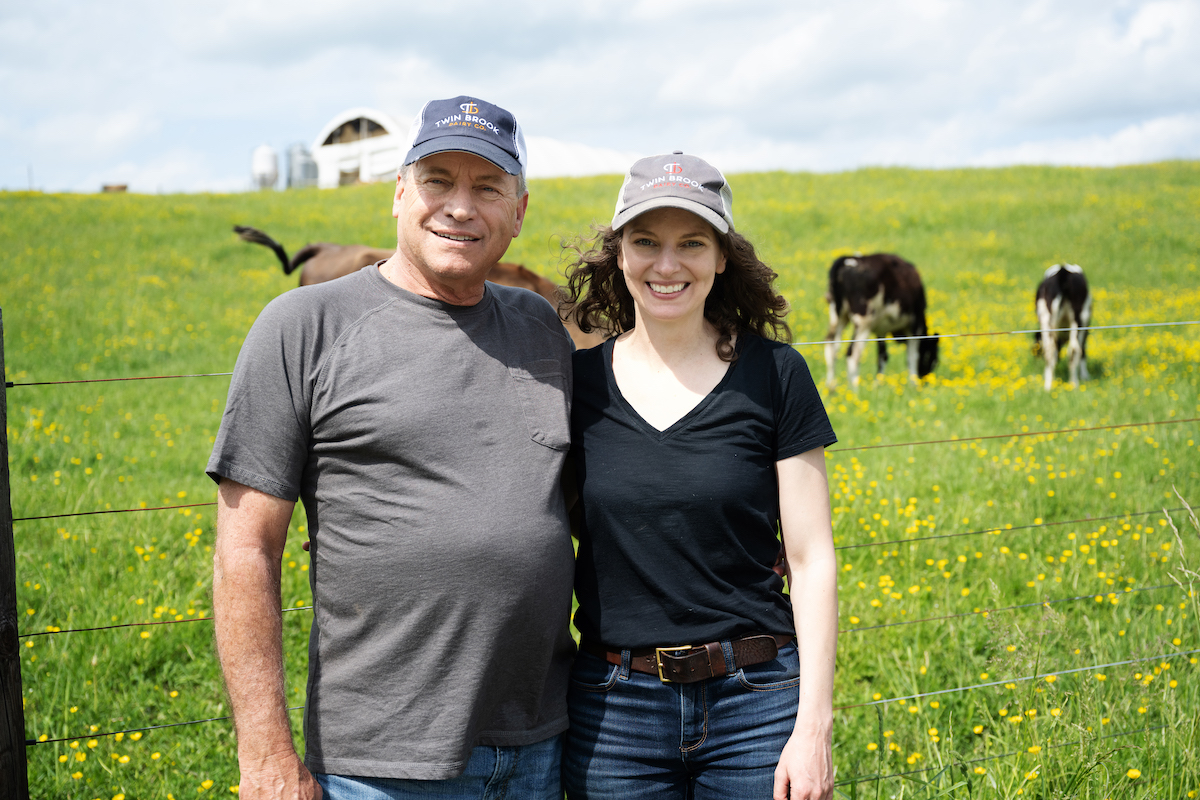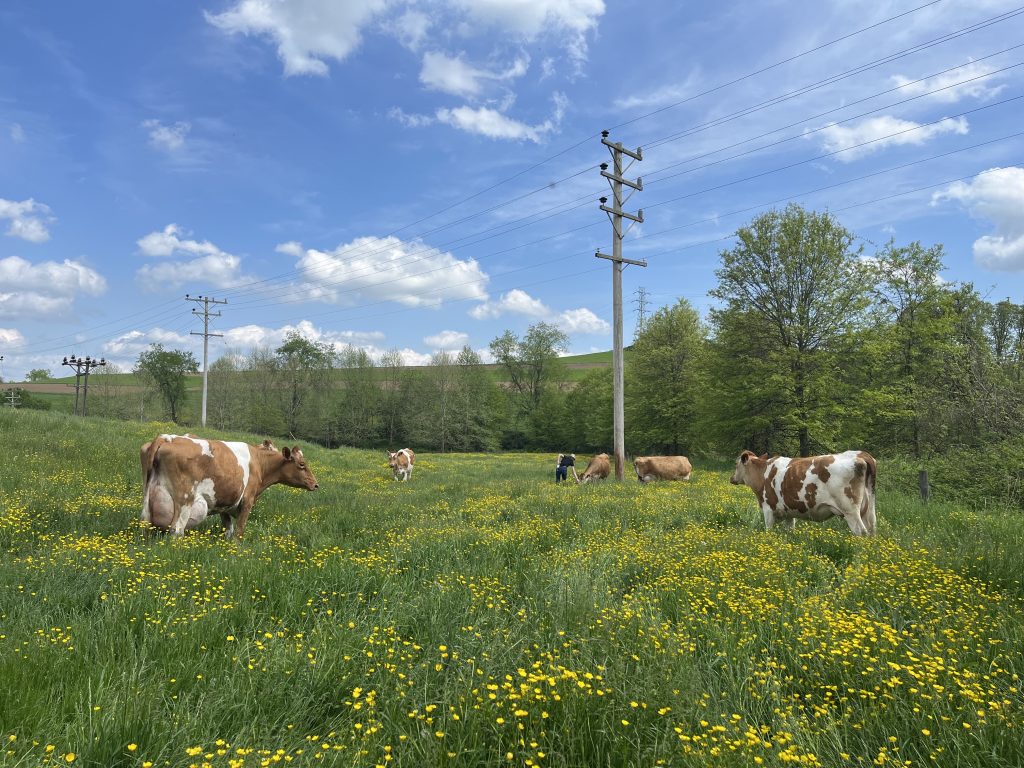A few years ago, John Marchezak faced a reality: if he continued to operate his dairy farm, Twin Brook Dairy Co. — one started by his father in 1952, known for its heritage Guernsey cow milk — he would go under.
“The price of milk (determined by some board of mysterious people) was far too low to even cover the costs of feeding or raising the cows,” explained his daughter, Randi Marchezak.
“Faced with that reality… I thought, ‘I’ll do something about it,’” Randi continued. “I approached a local ice cream maker, Millie’s Homemade Ice Cream, and asked the owner if they’d like to help us and buy milk from our farm.”
Randi emphasizes that it’s a “premium product.”
On the farm, they raise and milk Jersey, Holstein, and Guernsey cows — but it’s the Guernseys that set them apart.
“Guernsey is the breed that provides the sweetest and the best milk for you. It’s what separates our milk from what most others are making,” John said.
“There aren’t any other farms in Washington or Allegheny County with a small (or large) herd of Guernseys. There used to be one on every corner but it’s not that way anymore,” Randi added.
Twin Brook started raising Guernsey cows in the ‘50s, when they were “the rage” due to the flavor and quality of their milk and docile, easy temperament, Randi explained, calling them “grass puppies.”
The heritage cow breed, notoriously difficult to raise and known for their white-and-brown spotted coats, is unable to process the beta-carotene from grass, these cows pass it onto the milk, producing a beautiful golden, more delicious product.
The quality of that golden milk is kept high through processing; on the farm, John and Randi fat-pasteurize their milk at a low temperature and don’t homogenize it. “Most milk you buy in the store gets processed at a high temperature. They take the fat out and pulverize it with homogenization,” John said.
“We’re producing the highest level of milk you can,” Randi added, with more flavor and more nutrients.
But, putting out this kind of premium product doesn’t come without challenges:
“People tell me our product is too expensive, but they have an expectation based on what they get in a store,” Randi said at a recent conference. “But in the backend, we’re putting out a different, better quality product that can bring more money to the farm to keep it going.”
“And then, there are people who want what they’re used to, a homogenized product, where there are no inconsistencies,” she continued, noting that because Twin Brook is non-homogenized, a layer of cream will form on top as the milk settles.
“This makes the sales process interesting. If you don’t even know what cream top milk is, and you buy ours, open it, and the first pour is two inches of cream, that’s a little alarming.”
But with a mix of consumer education, understanding, and excitement for cream-top milk, Randi’s sales have been consistently growing.
The first day Randi bottled milk, Twin Brook accounted for about 70 gallons of the farm’s production. Now, the premium milk brand uses up about 400-420 gallons a week, delivering to coffee shops, Harvie, and a few other spots in the region.
Randi is proud to be a part of Harvie because we’re the advocates that small farms — like Twin Brook — need. Try their cream top or chocolate milk in your next delivery. (Twin Brook’s chocolate milk is a staff favorite)!





